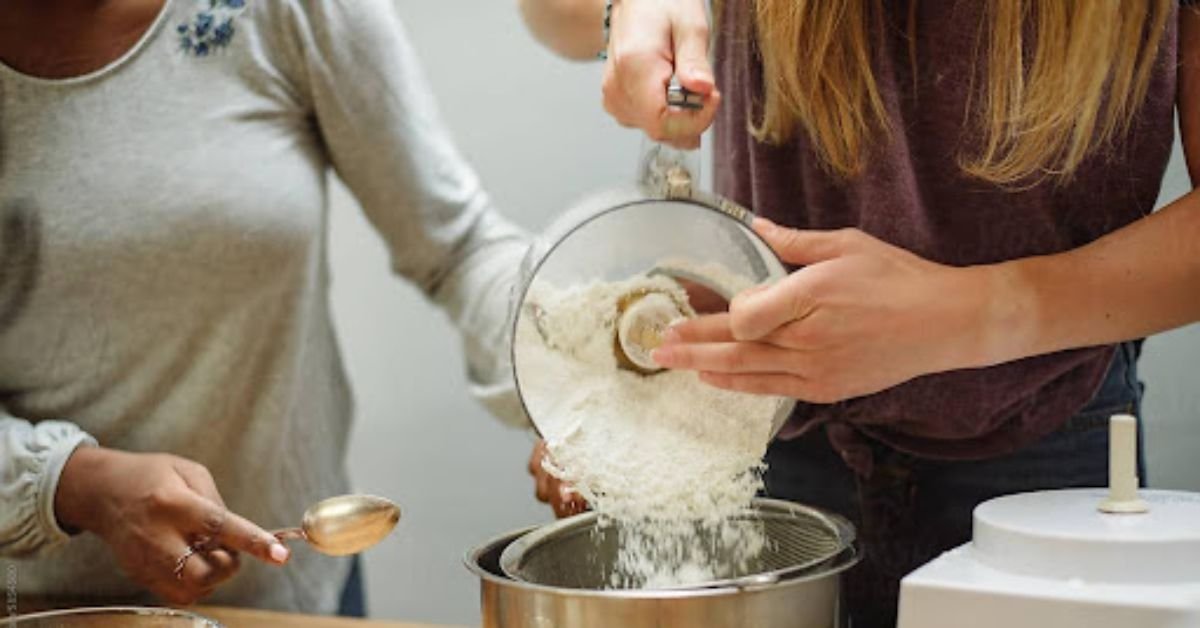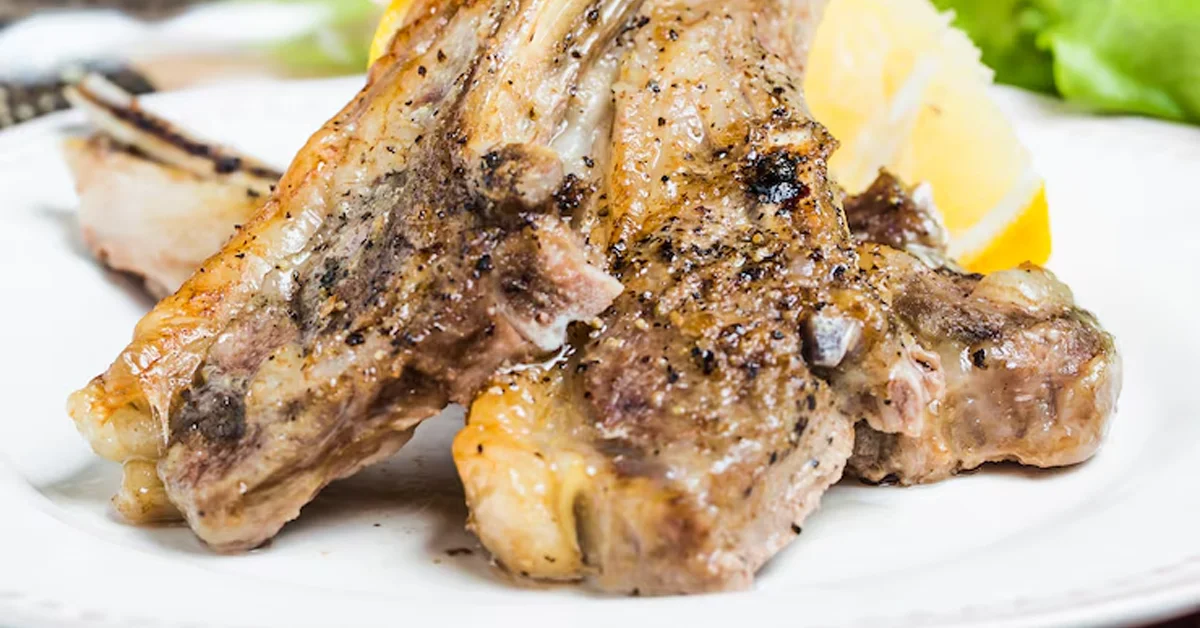Food & Drink
How Almond Flour is Used in Different Industries

Many people use almond flour for baking since it is common in cakes, cookies, and bread. But almond flour is also used in other products. Some companies use it in beauty products, protein bars, and meal replacements. It is also popular in the health food industry. Many businesses buy almond flour in large amounts to make their products. This article will explain how different industries use almond flour and why they buy it in bulk.
Almond Flour in Beauty Products
Some beauty and skincare products use almond flour. It is soft on the skin and helps remove dead skin. Many face masks and scrubs have almond flour to make the skin feel smooth.
Some companies also use almond flour in soap and lotion. Its natural oils help keep the skin soft. Many beauty brands choose almond flour because it is natural and does not contain chemicals.

Almond Flour in Protein Bars
Many protein bars contain almond flour. This ingredient makes the bars taste good and gives them a nice texture. Almond flour also contains protein and healthy fats, making it a good ingredient for energy snacks.
People who want healthy snacks prefer almond flour. It does not have gluten and is good for people who follow special diets. Many companies that make protein bars buy bulk almond flour, so they always have enough.
Almond Flour in Meal Replacements
Almond flour is also used in meal replacement shakes and powders. It has protein and fiber, which help people feel full for a long time. Because almond flour does not have gluten, it is good for many diet-friendly products.
Health food brands like almond flour because it is natural. It mixes well in shakes and smoothies, improving the texture.
Why the Health Food Industry Uses Almond Flour
Healthy and organic food production relies substantially on almond flour usage by various companies. Consumers following keto, paleo, and vegan diets search specifically for natural food ingredients. The selection of almond flour works well since it contains essential nutrients without gluten. Organic food brands select almond flour instead of other ingredients because it remains free from artificial substances and chemical additives. The product serves the natural needs of those who prioritize healthy dining options. That is why many companies buy large amounts of almond flour.
Why Companies Buy Almond Flour in Bulk
Manufacturers need a steady supply of almond flour. Buying in bulk helps them save money and maintain the same quality of their products. When they order large amounts, they get better prices, making bulk buying a smart choice.
Almond flour stays fresh for a long time if stored correctly. Companies can buy a lot at once without worrying about it going bad. This helps them keep up with production.
Conclusion
Almond flour serves purposes beyond baking applications. Beauty products, protein bars, and meal replacement items contain almond flour. The main reason health food companies select almond flour is its natural components combined with nutritional content. Purchasing large quantities of almond flour allows businesses to lower their costs because it enables consistent supply. The rising customer demand for health products stimulates market demand for almond flour.
Food & Drink
Juicy Chicken Satay Skewers You Can’t Resist

If you’re looking for a fun, tasty dinner idea, chicken satay skewers are here to save the day. These are spicy and savory skewers that are juicy on the inside and just a little crispy on the outside. Perfect for a family dinner or a backyard meal, this dish is simple to make and full of flavor. Let’s talk about what makes these skewers so special and why you’ll want to make them again and again.
What Makes Chicken Satay So Good?
The magic of chicken satay lies in the way it’s cooked and seasoned. The chicken is cut into strips and placed on sticks, which makes it fun to eat. It’s then cooked until golden and juicy, usually on a grill or in the oven. But what makes it even better is the sauce. Many people serve chicken satay with a peanut-based dipping sauce, and it adds a creamy, rich taste that balances the spices in the chicken.
These spicy and savory skewers are also easy to customize. You can make them a little spicy, or very mild. You can even try different sauces to match your taste. Kids love them because they’re easy to hold and fun to dip. Grown-ups love them because the flavors are bold and exciting.
A Great Dinner Option
Chicken satay skewers are perfect for dinner because they don’t take much time to make. You can prepare them ahead of time, store them in the fridge, and cook them when you’re ready to eat. They also go well with many different sides, like rice, salad, or even noodles. If you’re trying to eat healthy, this dish is a great choice. It’s packed with protein and doesn’t need a lot of oil.
Whether you’re cooking for two or feeding a big family, chicken satay fits the bill. You can make a few skewers or a whole tray full. And cleanup is easy too, especially if you cook them in the oven or air fryer.
Perfect for Parties, Too
Planning a party or a weekend get-together? Chicken satay skewers are a crowd-pleaser. They look great on a plate and taste even better. You can serve them as appetizers, snacks, or as part of a full meal. Just put the skewers on a tray, add a bowl of dipping sauce, and you’re ready to impress your guests.
Plus, they don’t need to be served hot. Even at room temperature, they stay tasty and juicy. That means you don’t have to worry about keeping them warm while guests arrive.
Easy to Learn, Hard to Forget
Don’t worry if you’ve never made chicken satay before. It’s not hard to learn. Once you make it once, you’ll see how simple and fun it is. You’ll get better each time and maybe even start adding your own twist.
There are many great guides online, like the one from Corrie Cooks, that show step-by-step instructions. These recipes are made for home cooks, so you don’t need any fancy tools or hard-to-find ingredients. Just follow along and enjoy the process.
Try It This Week!
If you haven’t tried chicken satay yet, this is your sign to give it a shot. It’s one of those meals that looks like it took a lot of work but is actually super simple. And when you bite into that first skewer—juicy, warm, full of flavor—you’ll understand why it’s such a favorite around the world.
So grab some skewers, get cooking, and enjoy one of the best spicy and savory skewers you’ll ever taste. Whether it’s for dinner, lunch, or your next party, chicken satay is always a hit.
Food & Drink
Explore Kasselrib: A Must-Try Dish For Food Enthusiasts
Food & Drink
La Burratina: Discover Italy’s Creamy Cheese Delight
-

 Entertainment11 months ago
Entertainment11 months agoSandra Orlow: Exploring the Life and Legacy of a Cultural Icon
-

 General8 months ago
General8 months agoBaby Alien Fan Bus: Watch Parts 2 & 3 on Twitter, Reddit!
-

 General8 months ago
General8 months agoDiana Nyad & Bart Springtime: A Swim to Success
-

 Business12 months ago
Business12 months agoTex9.Net Crypto: Fast, Secure International Money Transfers with Competitive Rates
-

 Business1 year ago
Business1 year agoWhat is O Farming: How to Make Money Online and Its Start-Up Benefits
-

 Business12 months ago
Business12 months agoSnapchat Planets: Exploring Your Streak Universe
-

 General10 months ago
General10 months agoDeeper Dive into myfavouriteplaces. org:// blog
-

 Business1 year ago
Business1 year agoFintechZoom Apple Stock: Real-Time Insights and Expert Analysis


